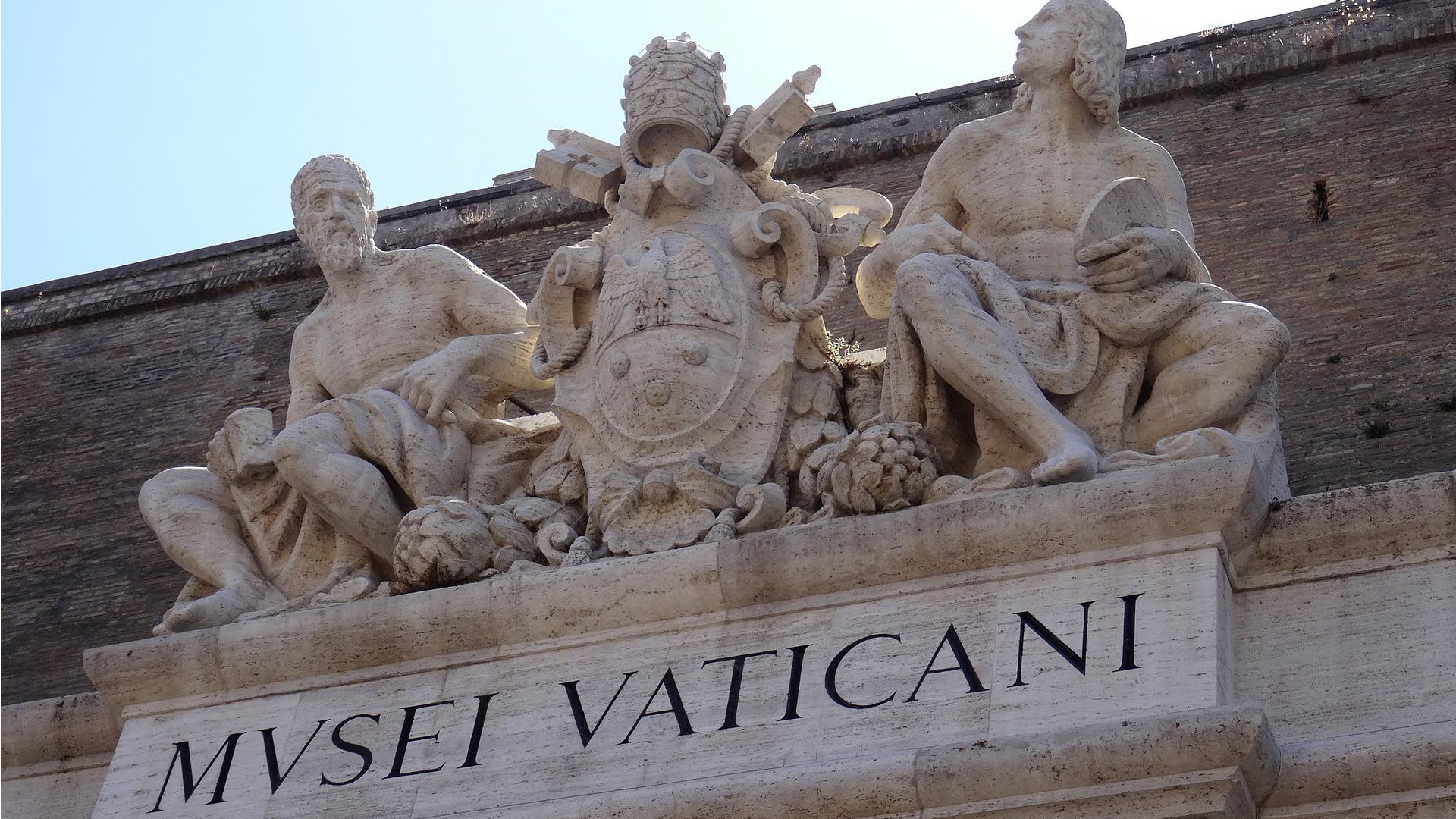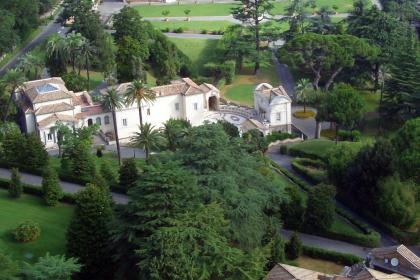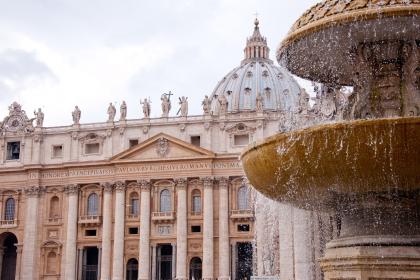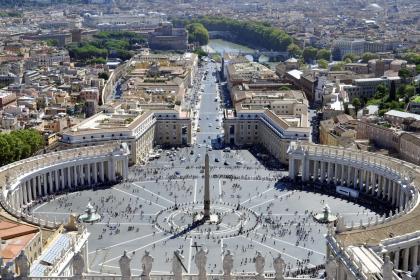
As a collection of ancient sculptures, the first group was begun by Julius II (1503-13) but it was Clement XIII (1758-69) who had the Secular Museum created with the assistance of Winckelmann, exhibiting Greek and Roman sculptures.
With Clement XIV (1769-74) and Pius VI (1775-99), the Museo Pio Clementino was founded. Here, you can find the most famous examples of ancient sculpture, such as the Apollo of Belvedere, the Laooconte group and the Belvedere Torso, were displayed. In 1807-10, under Pius VII, the Museo Chiaramonti was created by Canova, hosting Roman sculptures.
In 1822, the Braccio Nuovo was opened with more than 150 sculptures, including statues such as The wounded Amazon, The Doriforo, the huge statue of the Nile, the Augustus of Prima Porta.
In 1837, Pope Gregory XVI opened the Gregorian Etruscan Museum, with material from archaeological excavations carried out in southern Etruria in the 19th century, and in 1839, the Gregorian Egyptian Museum, with a series of statues of gods or members of the royal family, sarcophagus, mummies and funerary materials. In 1844, the Lateran Secular Museum (now the Gregorian Secular) was opened, followed by the Pius Christian Museum, whose collections included materials from excavations in the Roman catacombs, including a large number of sarcophagus.
In the first 10 years of the 20th century, the Museum of Missionary Ethnology was created, where religious events and religious rites from other continents are presented. The Pinacoteca (Picture Gallery) was also opened at the public, with a collection of works from the 12th to the 18th century by artists such as Lorenzetti, Martini, Giotto, Beato Angelico, Filippo Lippi, Perugino, Pinturicchio, Tiziano, Carracci, Caravaggio, Poussin, G. Reni and Guercino.
In 1973, Paul VI opens the Historical Museum and the Collection of Modern Religious Art, part of which is exhibited in the rooms of the Borgia Apartment, decorated by Pinturicchio, with works by Rosai, Boccioni, Balla, De Chirico, Guttuso and Manzù. The collections are completed by the Museum of the Vatican Library and the works exhibited in the three galleries: the Gallery of the Candelabri, with archaeological material from the Roman period, the Gallery of the Tapestry, with tapestries of Roman and Flanders manufacture, and the Gallery of the Geographical Maps, with 40 frescoes dedicated all over Italy, painted in 1580-83.
The visit includes the magnificent Sistine Chapel, whose name has its original inspiration in Pope Sixtus IV della Rovere, who was Pope from 1471 to 1484 and commissioned the restoration of the ancient Magna Chapel between 1477 and 1480.
The wonderful decoration of the 15th century walls, including the false drapery, the Stories of Moses and Christ and the portraits of the Popes, was carried out by a team of painters, composed at first by Pietro Perugino, Sandro Botticelli, Domenico Ghirlandaio, Cosimo Rosselli, supported by their workshops and some of their closest assistants, including Biagio di Antonio, Bartolomeo della Gatta and Luca Signorelli.
On the arch, Pier Matteo d'Amelia painted a sky with stars. The frescoes were begun in 1481 and completed in 1482, the same year that the marble works, like the railings, the choir gallery and the pontifical shield on the entrance door were realised.
On 15 August 1483, Sixtus IV dedicated and sanctified the new chapel in honour of the Assumption. Later, his grandson Julius II della Rovere, who was pope from 1503 to 1513, decided to change the decoration, giving the job to Michelangelo Buonarroti in 1508. The artist painted the vault and the lunettes, and finished the work in October 1512. The nine central panels represent the Stories of Genesis, from the Creation to the Fall of Man, the Flood and the subsequent rebirth of humanity with Noah's family.
The Pope opened the Chapel on the All Saints' Day with a great ceremony. At the end of 1533, Pope Clement VII de' Medici charged Buonarroti with a further change of decoration, painting the marvellous Last Judgement on the altar wall. Michelangelo began the magnificent work in 1536, during the Pontificate of Paul III, and finished it in the autumn of 1541, although the realisation of the work had resulted in the loss of the 15th century frescoes of the altarpiece with the Virgin Assumed among the Apostles and the first two episodes of the stories of Moses and Christ, painted by Perugino.
In the second half of the 16th century, a new version of Ghirlandaio's Resurrection of Christ was painted by Hendrik van den Broeck, and Signorelli's Dispute over the Body of Moses was painted by Matteo da Lecce, both frescoes on the entrance wall, seriously damaged by the fall of the door in 1522.
Completely restored between 1979 and 1999, the Sixtine Chapel is still the seat of the Conclave for the election of the Holy Father.
Vatican Gardens

 Condividi
Condividi
The Basilica of St. Peter in the Vatican

 Condividi
Condividi
Saint Peter’s Square

 Condividi
Condividi
Information
From Monday to Saturday from 8.00 to 20.00Last entrance at 18.00
Every last Sunday of the monthFree entry from 9.00 – 14.00 (last entrance 12.30)Possibility of guided tours upon reservation
Closures 2025
- Sunday (except the last Sunday of each month, if not in conjunction with the Feast of 29* June, Saints Peter and Paul),
- 1 and 6 January,
- 11 February,
- 19 March,
- 21 April,
- 1 May,
- 29* June,
- 15 and 16 August,
- 1 November,
- 8, 25 and 26 December
For updates and guidelines please check the official website
 Condividi
Condividi
Location
To find out about all accessibility services, visit the Rome accessible section.











































